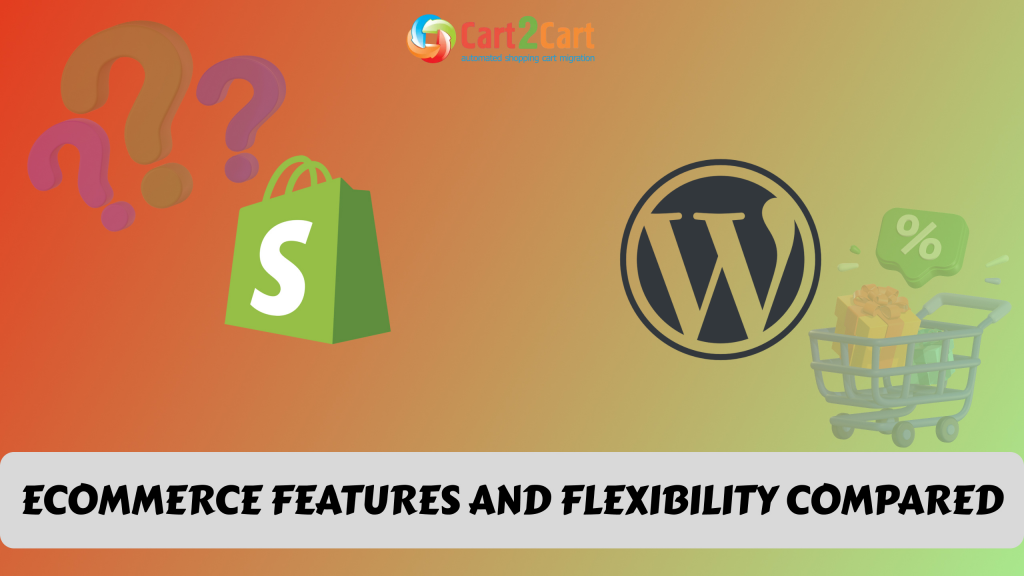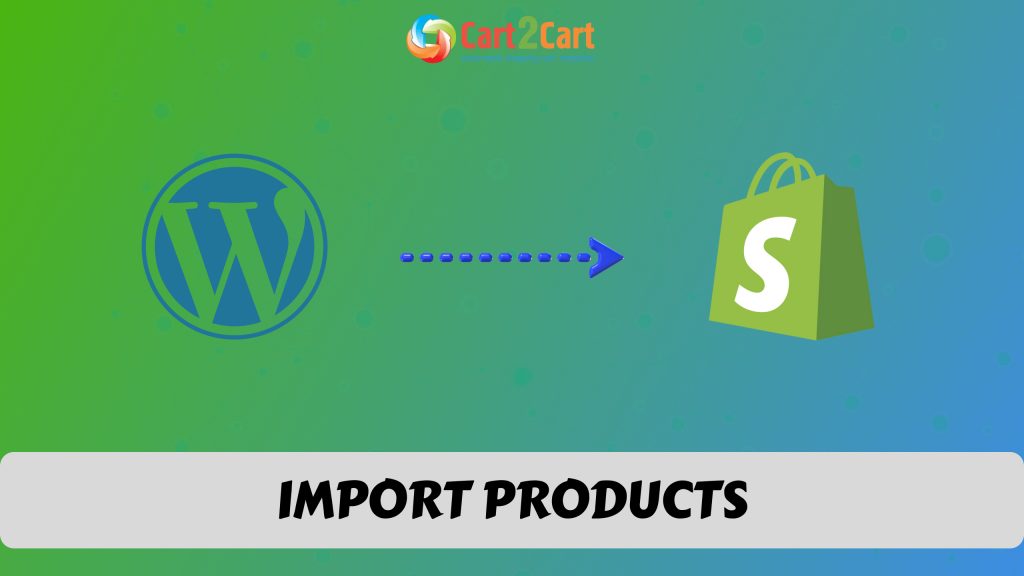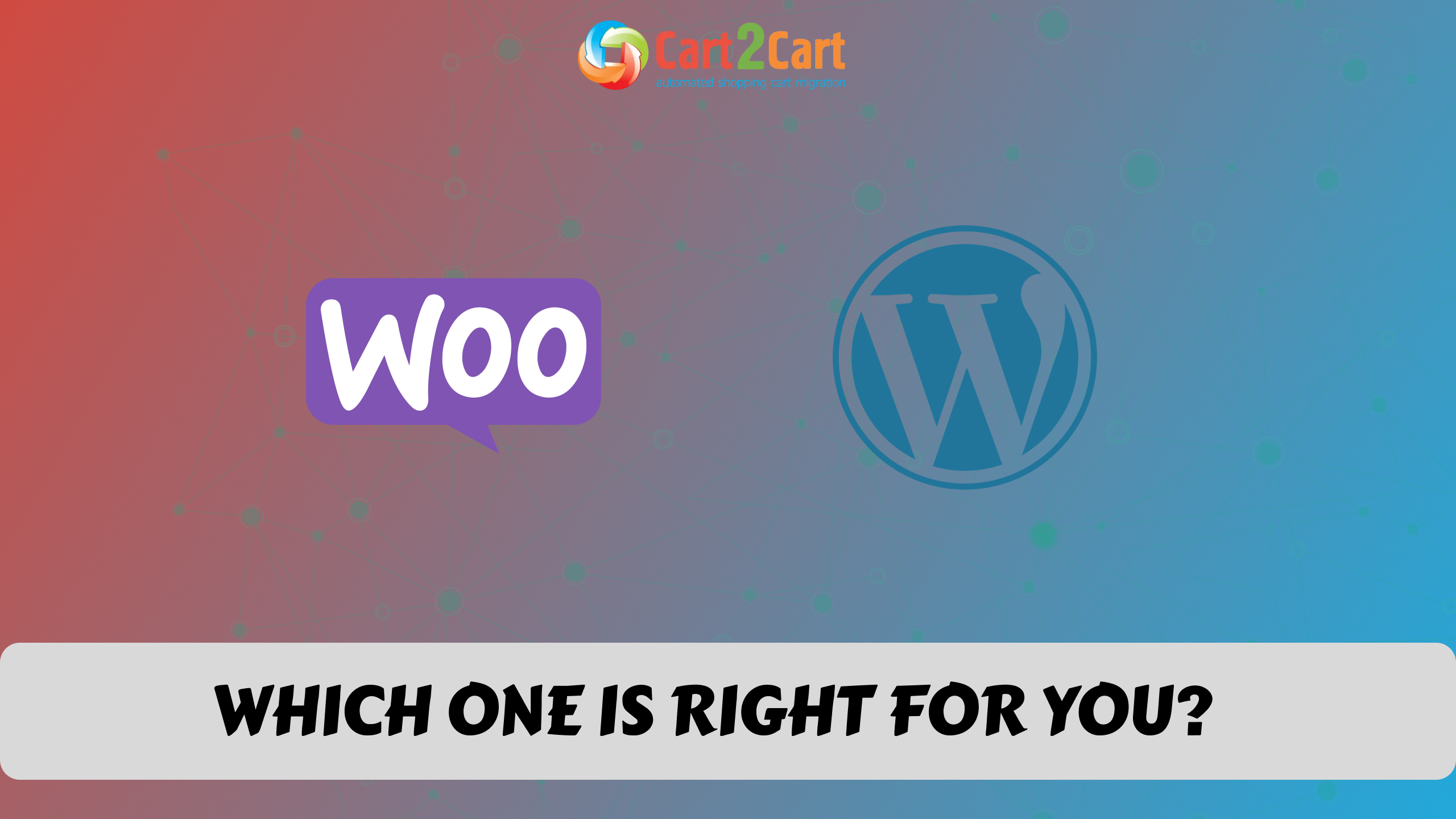WordPress Migration
Considering a WordPress Migration? Cart2Cart offers the premier fully automated solution to migrate from WordPress to another platform, or even to a more optimized WordPress setup. Our secure and fast process, often completed in just a few hours, guarantees zero downtime for your source store, minimizing disruption to your business. Trust Cart2Cart's proven expertise to handle a comprehensive transfer of your critical data, including products, customers, orders, SEO URLs, and more. We understand the importance of a seamless transition, and our platform is designed to make your WordPress Migration worry-free.
How to Migrate to WordPress
This step-by-step guide details how to securely migrate to WordPress from any other e-commerce platform using Cart2Cart, ensuring complete data integrity for your online storefront.
- Register and Initiate: Create a Cart2Cart account to begin your platform switch. This initial step is free and takes only a minute.
- Connect Your Source Store: Provide the credentials for your current platform to allow secure API access for the data transfer.
- Connect WordPress Target Store: Download the Cart2Cart Connection Bridge and upload it to your WordPress root folder via an FTP client. This establishes a secure link for the data transition.
- Select Data and Options: Choose which data entities to move, including products, SKUs, and customer orders. Configure crucial options like 301 redirects to preserve your SEO rankings.
- Run a Free Demo Migration: Launch a free test transfer to move a limited set of your data. This allows you to check the results directly in your new WordPress store before the full replatforming.
- Launch the Full Migration: Once satisfied with the demo, start the full migration. The process runs on our servers, ensuring no downtime for your business.
Pro-Tip: To enable the connection, you must install the Cart2Cart WordPress Migration module. Please note that migrations have limitations regarding multi-store features, and SEO options for blogs are not included in the standard transfer.
Automated migration
Just set up the migration and choose the entities to move – the service will do the rest.
Try It Free
Data Migration Service Package
Delegate the job to the highly-skilled migration experts and get the job done.
Choose Package
What data can be migrated from WordPress
-
Products
-
Product Categories
-
Manufacturers
-
Taxes
-
Customers
-
Orders
-
Coupons
-
Reviews
-
Blogs
-
Blog Posts
-
Multiple Languages
-
CMS Pages
Choose all the extra migration options and get 40% off their total Price
We’re committed to protecting our customers’ data security. Check out our Security Policy
The Cart2Cart service has all the necessary functionality to migrate store databases on WordPress of any size and complexity. Below are the most popular migration directions among our customers:
Help Center
Let’s figure out everything about WordPress migration through
Cart2Cart.
Discover our checklist, related articles, and answers on frequently asked questions.

 March 31, 2025
March 31, 2025 Shopify vs WordPress (WooCommerce) in 2025: Which Platform is Best for Your Online Store?
Read full article
 January 27, 2025
January 27, 2025 Import Products from WordPress to Shopify
Read full articlePay only for what you migrate - the cost depends on the number of records to be moved
Estimate Your WordPress Migration Cost Instantly
Discover your exact WordPress migration cost instantly. Our transparent tool provides clear WordPress migration pricing with no hidden fees, helping you confidently plan your move to WordPress based on an accurate WordPress migration price.
WordPress Monthly Pulse: The Age of Refinement and Integration
This month, the WordPress e-commerce ecosystem, powered predominantly by WooCommerce, tells a story not of disruptive revolution, but of strategic, deep-seated refinement. The platform is doubling down on its core strengths—flexibility, performance, and developer empowerment—to solidify its market leadership. For business leaders, the message is clear: WordPress is maturing from a ubiquitous CMS into a highly sophisticated and integrated commerce engine, capable of supporting complex operations while retaining its foundational openness.
Consolidating an Unrivaled Industry Footprint
WordPress continues its reign as the undisputed leader in the content management space, and by extension, a dominant force in e-commerce. Current data indicates that WooCommerce powers over 23% of the top one million e-commerce sites, a staggering figure that dwarfs many of its SaaS-based competitors. This is not merely a reflection of its legacy; it's an indicator of enduring trust. This market position creates a powerful flywheel effect: a vast talent pool of developers, an unparalleled library of extensions, and a community-driven support system that lowers the total cost of ownership and mitigates risk for businesses choosing the platform.
The Performance Mandate: Core Vitals as a Conversion Driver
The recent release of WordPress 6.5, codenamed "Regina," has direct and significant implications for e-commerce performance. While not a WooCommerce-specific update, its core improvements are a tide that lifts all ships. The introduction of the Font Library and more efficient translation engines has resulted in measurable gains in site speed and a reduction in Largest Contentful Paint (LCP) times. For merchants, this isn't just a technical achievement; it's a direct investment in conversion rates. In an era where every millisecond counts, these foundational performance enhancements translate directly to improved user experience, better SEO rankings, and ultimately, higher revenue.
Unlocking the Next Wave of Developer-Led Innovation
The true power of WordPress has always been its extensibility, and recent updates have significantly expanded the toolkit for developers. The new Block Bindings API, also introduced in WordPress 6.5, is a game-changer. It allows developers to connect block attributes to custom fields and other dynamic data sources without writing complex code. The "so what?" for e-commerce leaders is profound: this enables the creation of highly bespoke, dynamic product pages, personalized customer dashboards, and unique content-commerce experiences that were previously resource-intensive. This move ensures that the platform's customization capabilities are not just powerful but also increasingly efficient to implement, keeping pace with the demand for unique brand experiences.
A Flagship Evolution in Merchant Experience
This month saw the full rollout of the new, block-based product management experience as the default in WooCommerce 8.8. This represents a critical strategic pivot towards simplifying the back-end for merchants. By modernizing the interface and making it more intuitive, WooCommerce is directly addressing a key historical advantage of its SaaS competitors: ease of use. This update is designed to reduce the learning curve for new merchants and streamline daily operations for established teams. It signals a deep understanding that a world-class customer experience on the front-end must be supported by an efficient and empowering merchant experience on the back-end.
Fortifying Trust Through Proactive Security Measures
In the digital commerce landscape, trust is non-negotiable. The WordPress ecosystem's commitment to security was underscored this month by a series of proactive maintenance and security releases for both the core platform and the WooCommerce plugin. Beyond simple bug fixes, these updates often include hardening measures against emerging vulnerabilities. For enterprise-level clients and those handling sensitive customer data, this consistent and transparent approach to security is a critical differentiator. It demonstrates a mature understanding that platform integrity is not a feature but a prerequisite for any serious e-commerce operation.
Expanding the Global Commerce Tapestry
The platform's global ambitions continue to advance with the ongoing expansion of WooPayments into new territories. Recent rollouts have focused on key European and Asia-Pacific markets, simplifying the complexities of cross-border commerce. By offering an integrated payment solution that handles local currencies, tax calculations, and regional payment preferences, WooCommerce is significantly lowering the barrier to entry for international sales. This isn't just about adding a new payment gateway; it's about providing merchants with a cohesive, native toolkit for global expansion, allowing them to tap into new revenue streams with confidence.
Case Study: Why a High-Growth CPG Brand Chooses WordPress
The recent launch of "Artisan Roast Collective," a rapidly growing direct-to-consumer specialty coffee brand, on WooCommerce is a telling example of the platform's strategic appeal. While they could have chosen a turnkey SaaS solution, their decision was likely driven by the need for a deep content-commerce integration. Their business model relies on storytelling, detailed origin profiles, and educational brewing guides—content that lives natively within WordPress. By choosing WooCommerce, they avoided a "bolted-on" blog and instead built a unified platform where content drives commerce. This migration highlights the primary value proposition for modern brands: unmatched control over brand narrative and customer experience, free from the creative and technical constraints of closed-box systems.
Source: Internal analysis synthesizing data from W3Techs, the official WordPress News blog, the WooCommerce Developer Blog, and industry reports for the current month.
Just set up the migration and choose the entities to move – the service will do the rest.
Try It FreeDelegate the job to the highly-skilled migration experts and get the job done.
Choose Package















